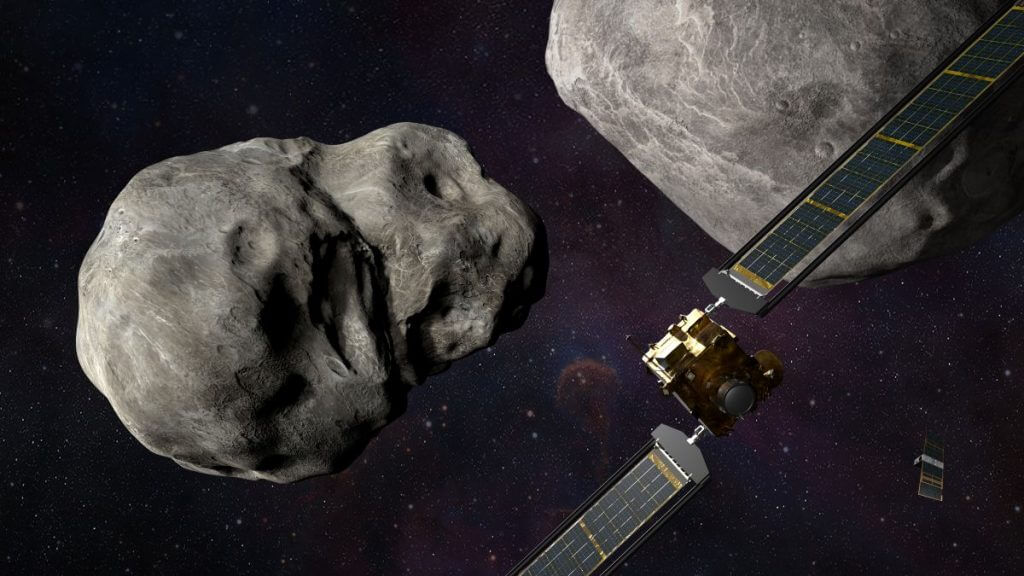A new simulation of NASA’s Double Asteroid Redirection Test (DART) mission suggests that rather than leaving a crater behind, the DART impactor could severely deform the small asteroid it will collide with.
NASA’s Double Asteroid Redirection Test is an ambitious mission that will test the viability of using a “kinetic impactor” to deflect an asteroid heading toward Earth. (“Kinetic impactor” in this case means slamming a spacecraft into the rock.) DART launched aboard a SpaceX Falcon 9 rocket in November 2021 and is scheduled to arrive at its target, the binary near-Earth asteroid Didymos and its moonlet, Dimorphos, in September.
DART will impact Dimorphos at around 4.1 miles per second (6.6 km/s), or 14,760 mph (23,760 kph), which mission scientists hope will cause the moonlet’s orbital speed to change by a fraction of a millimeter per second, just enough to alter its orbit around the larger asteroid. While Dimorphos and Didymos pose no threat to Earth, they are perfect candidates to test the kinetic impactor concept so that if an asteroid ever were discovered on a collision course with our planet, NASA would have a viable option for planetary defense. It’s the agency’s first dedicated planetary defense mission.
Related: DART asteroid mission: NASA’s first planetary defense spacecraft
In the new simulation conducted by scientists at the University of Bern and the National Centre of Competence in Research (NCCR) Planets, researchers were able to create a new modeling approach that accounts for the shock waves and the cratering process that would follow DART’s impact. Unlike previous simulations, this model took into account the fact that Dimorphos might not have a solid core, but rather a more fragmented, loosely-packed core.
This new model suggests that the DART mission could eject more material from Dimorphos than expected, and potentially alter its course much more strongly than in previous estimates.
“Contrary to what one might imagine when picturing an asteroid, direct evidence from space missions like the Japanese space agency’s (JAXA) Hayabusa2 probe demonstrate that asteroid can have a very loose internal structure — similar to a pile of rubble — that is held together by gravitational interactions and small cohesive forces,” study lead author Sabina Raducan, a postdoctoral researcher at the University of Bern, said in a statement (opens in new tab). “This could drastically change the outcome the collision of DART and Dimorphos.”
A study of the new DART simulation and its results was published (opens in new tab) June 1 in The Planetary Science Journal.
Email Brett at BTingley@Space.com or follow Brett on Twitter at @bretttingley. Follow us on Twitter @Spacedotcom or on Facebook.

